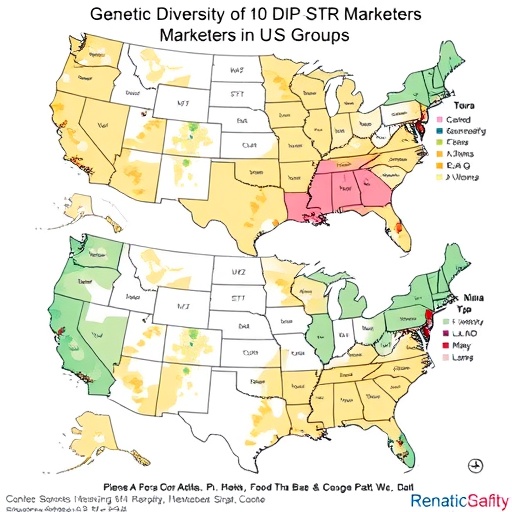New single-cell technology has allowed scientists to study malaria parasites at the highest resolution to date. By investigating the genes in individual malaria parasites, scientists from the Wellcome Sanger Institute are beginning to understand the genetic processes each parasite undergoes as it moves through its complicated lifecycle.
The results, published today (27 March) in eLife are the first step towards developing the Malaria Cell Atlas, a data resource that will provide gene activity profiles of individual malaria parasites throughout their lifecycle. The Malaria Cell Atlas will allow researchers to identify weak points in the parasite's lifecycle for intervention with drugs, and will help transform research into the disease.
Nearly half of the world's population is at risk of malaria and more than 200 million people are infected each year. The disease caused the deaths of almost half a million people globally in 2015*.
Malaria is caused by Plasmodium parasites that are spread to people through the bites of infected mosquitoes. Plasmodium parasites themselves are tiny, single-celled organisms that have a complex lifecycle, including many stages. Their small size and complicated lifecycle make the parasites incredibly difficult to study.
Traditionally used to study mammals, single-cell sequencing allows scientists to investigate individual cells and realise the true diversity of cell states within the same tissue or organ.
In a new study, scientists from the Sanger Institute applied single-cell sequencing to individual malaria parasites and achieved the highest resolution view of malaria parasites to date.
The team were able to uncover hidden patterns in the way different individual parasites use their genes during an infection. These differences are not visible when a large pool of parasites are studied.
The results are the first steps to developing the Malaria Cell Atlas — a reference map for understanding how malaria parasites move through the lifecycle and how much individual to individual variation there is among parasite stages that are most vulnerable to drugs and vaccines. The map, which will first be created for the rodent malaria parasite, will provide a visual representation of all the genes switched on and off in individual malaria parasites across their complete lifecycle, including within the mosquito.
The Malaria Cell Atlas will eventually include single cell data from the host tissues the parasite must colonise to complete its lifecycle, including the mosquito gut cells and the mammalian host liver cells. These tissues also play a very important role in the progression and transmission of the disease.
In this study, scientists analysed more than 500 individual parasites of both rodent malaria (Plasmodium berghei) and the most deadly human malaria parasite (Plasmodium falciparum) during the blood stage of the parasite's lifecycle.
By zooming in on individual P. berghei parasites, the team were able to detect the activity of over 4,500 genes in total across all cells: over 90 per cent of the genes in the P. berghei genome. At the level of individual cells, researchers detected the activity of nearly 2,000 genes on average, which is the most ever seen in single malaria parasites.
Dr Adam Reid, joint first author from the Wellcome Sanger Institute, said: "We now have the most high-resolution image of malaria parasites. By studying the activity of each gene in individual parasites, we have uncovered previously hidden ways in which genes are used for the development of malaria parasites in the blood. This study paves the way for studying malaria parasites during a natural infection in people."
Dr Arthur Talman, joint first author from the Wellcome Sanger Institute, said: "We have gained a better understanding of which genes are important for the parasite to transmit between human and mosquito during the spread of a malaria infection. We also found that the parasite's development in the blood is regulated by groups of genes that are switched on and off in unison. Knowing how the parasite's lifecycle is controlled by particular genes, we have a stronger chance of interfering with it using drugs."
Previously, malaria parasites have been pooled and studied together, so subtle differences between individual parasites may have been missed. A single parasite may have a distinct advantage for infection and now researchers have a tool to investigate these subtle differences.
Dr Mara Lawniczak, lead author from the Wellcome Sanger Institute, said: "Single-cell technology will revolutionise how we study single-celled organisms, such as malaria parasites. We can now begin to truly understand diversity between individual parasites, even within the same human infection. This is the first step towards creating the Malaria Cell Atlas, a data resource that we hope will be valuable to the important global community of malaria researchers working to eliminate this devastating disease."
###
Contact details:
Emily Mobley
Press Office
Wellcome Sanger Institute
Cambridge, CB10 1SA
Phone: 01223 496851
Email: [email protected]
Notes to Editors:
*Malaria statistics: http://www.who.int/features/factfiles/malaria/en/
For more information on the Malaria Cell Atlas, visit: http://www.sanger.ac.uk/science/tools/mca
Publication:
Adam Reid et al. (2018) Single-cell RNA-seq reveals hidden transcriptional variation in malaria parasites. eLife. DOI: 10.7554/eLife.33105
Funding:
This work was supported by Wellcome (grant WT098051), a Sir Henry Dale Fellowship – jointly funded by Wellcome and the Royal Society (grant 101239/Z/13/Z) and an MRC Career Development Award (G1100339).
Selected websites:
The Wellcome Sanger Institute
The Wellcome Sanger Institute is one of the world's leading genome centres. Through its ability to conduct research at scale, it is able to engage in bold and long-term exploratory projects that are designed to influence and empower medical science globally. Institute research findings, generated through its own research programmes and through its leading role in international consortia, are being used to develop new diagnostics and treatments for human disease. To celebrate its 25th year in 2018, the Institute is sequencing 25 new genomes of species in the UK. Find out more at http://www.sanger.ac.uk or follow @sangerinstitute
Wellcome
Wellcome exists to improve health for everyone by helping great ideas to thrive. We're a global charitable foundation, both politically and financially independent. We support scientists and researchers, take on big problems, fuel imaginations and spark debate. http://www.wellcome.ac.uk
Media Contact
Emily Mobley
[email protected]
01-223-496-851
@sangerinstitute
http://www.sanger.ac.uk
http://dx.doi.org/10.7554/eLife.33105




